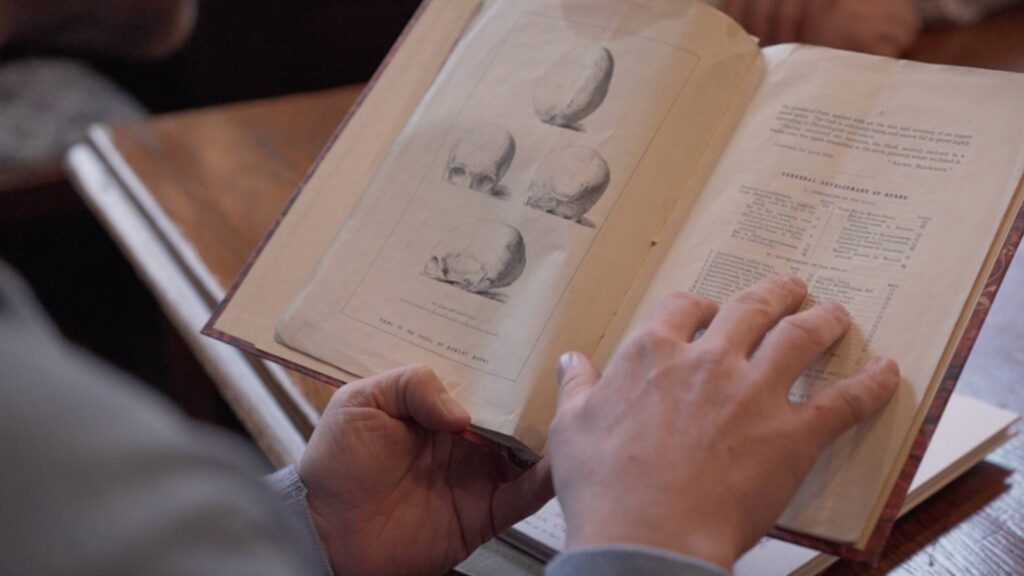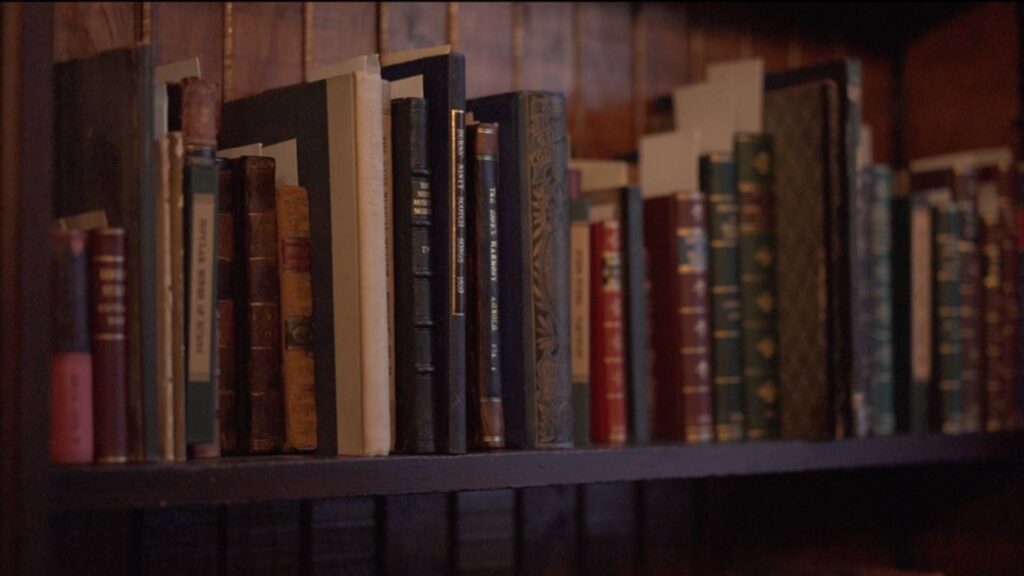
There are many fascinating and surprising artefacts in the vast trove of the Gibson Collection. I came across one particular piece during a recent rummage that I’d like to bring to your attention. It’s called “Phrenological Development of Robert Burns” and it was published in 1834 in Edinburgh.
This little timepiece transports us to the early 1800s, a time of science and pseudo-science, of enthusiasm and ignorance. The Phrenologists were a group of thinkers who believed that the character and abilities of a person were indicated by the shapes, undulations and abnormalities in the shape of their skull.
This fad came too late for a living Burns to participate in a cranial study consensually. But death was no barrier to the Phrenologists. Burns’ tomb was opened and poor, resting Rabbie’s head removed. It was sent to Edinburgh for ‘study’. Accurate measurements of the bardie’s skull were taken, and diagrams produced. The results were published in a volume now kept in the Gibson Collection.
The Phrenologists used Burns’ celebrity to attract attention to their studies and to bolster their own credibility, and this marvellous little book in the Gibson collection is testament to that. It’s author, one George Combe, was a principal Scottish phrenologist. Combe’s book does indeed seem credible. Scientific drawings give ‘views of the skull of Robert Burns’, and a little table provides the interested reader with information on the ‘cerebral development of Burns’.

Whilst the science of phrenology has long since been debunked, this slim volume stands testament to its moment in time. It shows that in 1834 Burns carried sufficient celebrity to make his skull a ‘must have’ item for the nation’s leading scientific enquirers.
The Gibson Collection is outstanding as it allows us to not just get a better understanding of Burns the poet, but also an understanding of Burns the icon, the symbol, the cultural artefact.

As Burns’ light has shone out across the world and through time from his Ayrshire base, it’s been refracted in different ways by different cultures. Many, many towns, communities and countries produced their own editions of Burns’ poetry. These were collected up hungrily by Gibson and form part of this tremendous treasure trove. From this we can learn about the types of communities who were engaging with Burns, and when. The affordable early Belfast and Dublin editions for example show a working-class drouth for access to the Bard’s works. Ornate editions with luxury paper and immaculate printing published in the centenary years of his life indicate the esteem in which he was held across the world.
But some of the least expected but most entertaining works in the Gibson Collection are items like the ‘responses’ to Burns. Essays, poetic collections, this phrenological guide, they all help use come to a better understanding of the man through his impact on the world.


The Linen Hall (Belfast Library And Society For Promoting Knowledge) is registered with the Charity Commission for Northern Ireland NIC 104 564.